Have you ever wondered which race is the deepest in Hyrox history? There’s no denying that the depth of competition has gotten better every year since the first Hyrox event in October 2018. At this point, there are so many fast athletes that people claim “___was probably most competitive race ever.” Let’s look at the data to see which races actually had the most competition.
ATHLETES ARE IMPROVING EVERY YEAR
Men
As of the end of April 2025, 139 men have run under 60 minutes in the Pro division at Hyrox (which I’ll refer to as “sub-60”). You would think that Season 7 would be the season with the most new men to break 60 minutes, but it was actually Season 6. In fact, even Season 5 had more new members of the sub-60 club than Season 7.
However, those stats don’t tell the whole story. The more important stat is how many of these top athletes raced during the same season (i.e., had the chance to face each other). Of the 139 men with a sub-60 PR, 129 of them raced this past season. That means 92.9% of the fastest men ever are still active in Hyrox, and I expect this number to keep growing as more people enter Hyrox. Those days of simply showing up with a fast PR and getting an easy podium are over.

Need proof that athletes are getting faster? This chart shows the fastest-to-slowest winning times for every men’s Pro race by season. So far, 50 of the 62 men’s Pro races in Season 7 have had a winning time under 60 minutes. Last season, only 32 races had a sub-60 winning time. If you go back just 3 seasons, only 13 races had a sub-60 winning time. Times that used to win races a few years ago now wouldn’t even finish in the top-10 at many local race weekends.
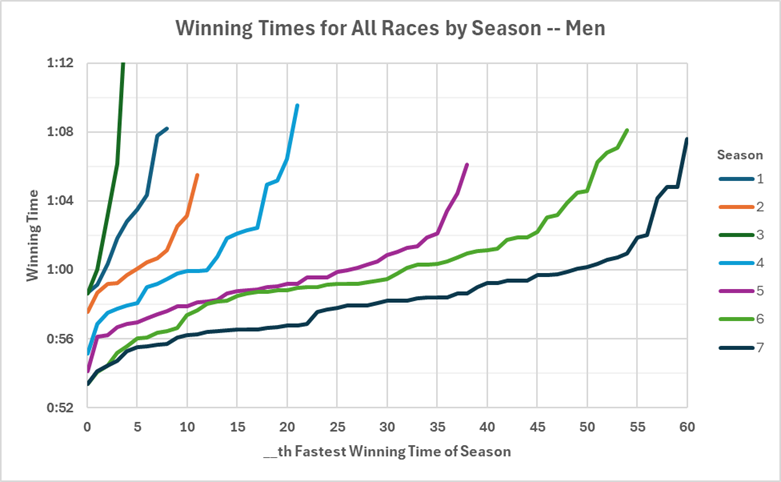
Women
As of the end of April 2025, 62 women have run under 65 minutes in the Pro division at Hyrox. This number might seem low, since it’s less than half of the 139 men who have run sub-60. However, it’s actually reasonable for number of “fast” women to be lower than the number of “fast” men. Throughout Hyrox’s history, the ratio of male-to-female finishers in the Pro division has almost always remained 2.4:1. If you take the ratio of 139:62, that’s 2.2:1, which is very close to 2.4:1.
If you look at the men’s field 2 years ago, they had 70 sub-60 finishers at the end of Season 5, which is almost the same total that the women’s field is at in Season 7. This suggests that depth in the women’s field is about 2 years behind the rate of growth in the men’s field, which is almost identical to the trend we saw in OCR. In other words, we should expect about the Season 9 women’s field to be as deep as today’s men’s field.
Of the 62 women with a sub-65 PR, 59 of them raced this past season. Only Belle MacFarlane, Rebecca Mason, Kristi O’Connell, and Emily Webb had run sub-65 in Season 6 or earlier but haven’t raced in Season 7. This is proof that the women’s field has never been more competitive, as 95.2% of the fastest women ever are still active in Hyrox.

Unsurprisingly, the women’s chart below has an almost identical trend to the men’s chart above. On average, the winning time in season 7 has been 3.8% faster than the average winning time in season 6. In fact, 35 of the 62 races so far in season 7 have been won by a woman in sub-65. Prior to that, only 36 of the 143 races in seasons 1-6 combined were won in a time under 65:00.
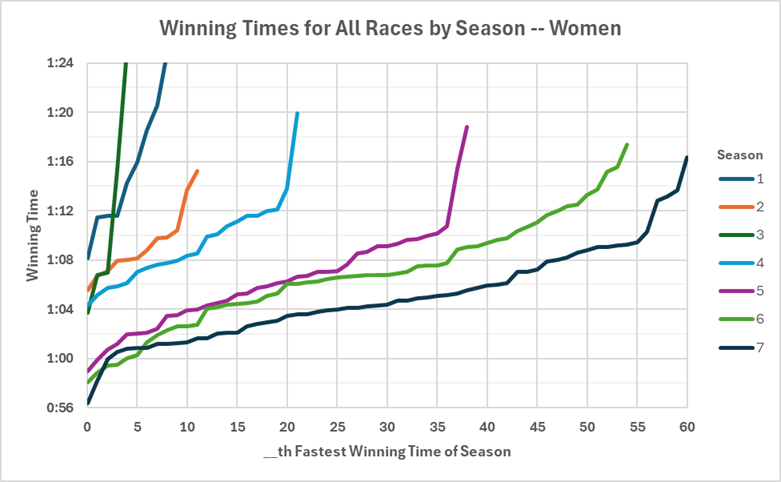
MOST COMPETITIVE RACES EVER
Breaking 60:00 for men or 65:00 for women is still a major milestone. After all, that time is good enough to podium, if not win, most local races. I looked up every athlete’s lifetime PR and only included those with a sub-60 PR for men or sub-65 PR for women. Then I ranked each race highest-to-lowest based on the number of finishers with a sub-60 PR for men or sub-65 PR for women.
I didn’t include Elite 15 Majors in these weekend totals, as those races are gated and run on a different course layout (“The Grid”). It’s virtually guaranteed at all Majors that all 15 men have a sub-60 PR and all 15 women have a sub-65 PR. However, adding the Elite 15 totals in wouldn’t have affected the top of the leaderboards below, as only a couple Major weekends had 10+ athletes with a sub-60 PR race in the normal Pro wave (as opposed to the Elite 15 wave with a grid course layout).
Men
The Last Chance Qualifier in Barcelona was tied with last year’s Age Group World Championship in Nice for the most sub-60 male finishers (47). These two races nearly doubled the number of sub-60 athletes from last year’s Last Chance Qualifier in Cologne (25). Barcelona had more sub-59, sub-58, and sub-57 athletes than last year in Nice, so I think it’s safe to say that the Last Chance Qualifier in Barcelona was the most competitive race in Hyrox history (so far).
Imagine showing up to the start line in Barcelona with a Pro PR of 59:59 and not even being ranked in the top-46. That’s just ridiculous. There were 14 different athletes with a sub-57 PR and 12 previous Major qualifiers fighting for the 3 remaining Hyrox World Championship spots.

Women
The Barcelona Last Chance Qualifier was the deepest race in women’s history, and it’s not even close. Prior to Barcelona, there were only 4 non-Major races with at least 8 sub-65 women, while Barcelona had 26 sub-65 women. Barcelona became the first women’s non-Major race with at least 5 sub-62 women, 10 sub-63 women, or 10 sub-64 women (there were 20).

BARCELONA LCQ DIDN’T GO ACCORDING TO PLAN
There’s a reason why you run the race and let athletes face each other head-to-head rather than assuming they’ll finish in-order based on their PR. The race results from Barcelona were shocking, with many athletes in the top-10 finishing at least 10 spots higher than their pre-race PR ranking. However, that is to be expected in such a deep race. With only 3 World Championship spots on the line, many athletes went into this race with an all-or-nothing attitude. Once they realized they were out of contention for the podium, many top athletes either dropped out of the race or slowed down to save their body for Chicago in mid-June.
LCQ winner Tom Rodgers came into the race with the 20th-fastest PR this season (58:18), while runner-up Hidde Weersma had the 40th-fastest PR this season before Barcelona (59:12). Jonathon Wynn came in with the 4th-fastest PR this season and ended up taking the final podium spot to earn his 3rd consecutive trip to Hyrox World Championship. Some really fast athletes saw their Elite 15 dreams shattered this weekend due to how deep the competition has gotten this season.
In only her 3rd career Pro race, Emilie Dahmen shocked the field to cross the finish line over a minute ahead of surprise runner-up Sinead Bent. Both Emilie and Sinead had only run 2 Pro individual races in their career prior to Barcelona. Emilie came into the race with the 12th-fastest PR this season (1:03:05), while Sinead’s 1:04:52 PR before was only the 27th-fastest entering this race. Two-time ITU Duathlon world champion Melanie Maurer rounded out the podium in only her 4th Hyrox race ever.

HYROX NEEDS TO SEED ATHLETES CORRECTLY
It’s baffling how Hyrox still puts some contenders in the wrong heats, especially in a race with as much on the line as the Last Chance Qualifier. Even though the eventual results showed that athletes don’t finish in the same order as their pre-race PR ranking, over 90% of the eventual top-50 finishers started the race with a top-50 pre-race PR ranking. However, 17 women and 10 men who finished in the top-50 weren’t given the chance to start with the first wave and instead were forced to run a solo effort rather than racing in a pack.
Unfortunately for 4th-place finisher Kris Rugloski, she crossed the line in 3rd thinking she locked up the final spot for Hyrox World Championship. However, Melanie Maurer ended up running 4 seconds faster from a later heat, giving Melanie the final spot for Chicago. If their finishing places were flipped, then the story would have been that Melanie was robbed because she probably would have run faster if she was with the top women. This whole situation could have been avoided if Hyrox did more research on athletes before the race. We even warned about this potential situation on Race Brain a few days before the event, and yet Hyrox still allowed it to happen.
Liam McCroary came into the race with the 11th-fastest PR this season (57:32) yet started over an hour after the first heat. There is no reason why Liam shouldn’t have been in the first heat, as he ran sub-58 in 2 of his previous 3 races. He reached wall balls in the 4th-fastest time of the day, 5 seconds ahead of eventual podium finisher Jonathon Wynn. Liam eventually would finish 6th overall, but who knows how he would have finished if he was allowed to race head-to-head against the top men rather than doing a solo effort an hour later.
Hyrox has always limited the first wave to 40-50 athletes, so they might as well get the right people there. The sport is more competitive than ever, and that trend is only going to continue. Putting together a simple list with everyone’s PR entering the race, like I showed in this article, would solve so many problems in the Pro division.


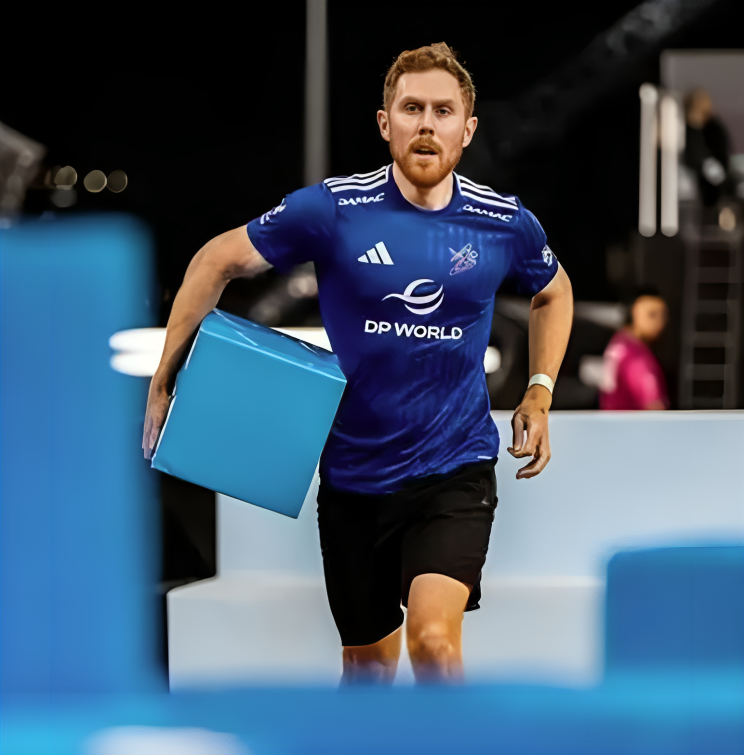
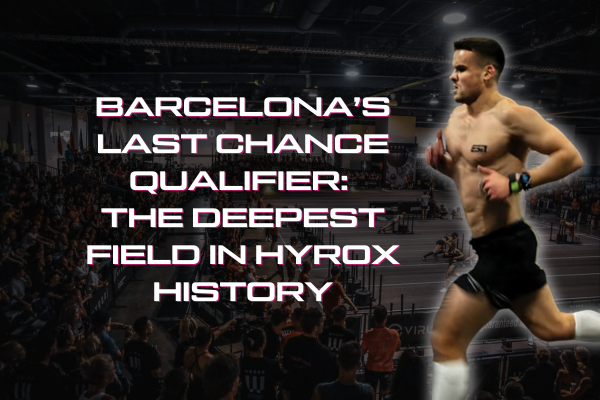
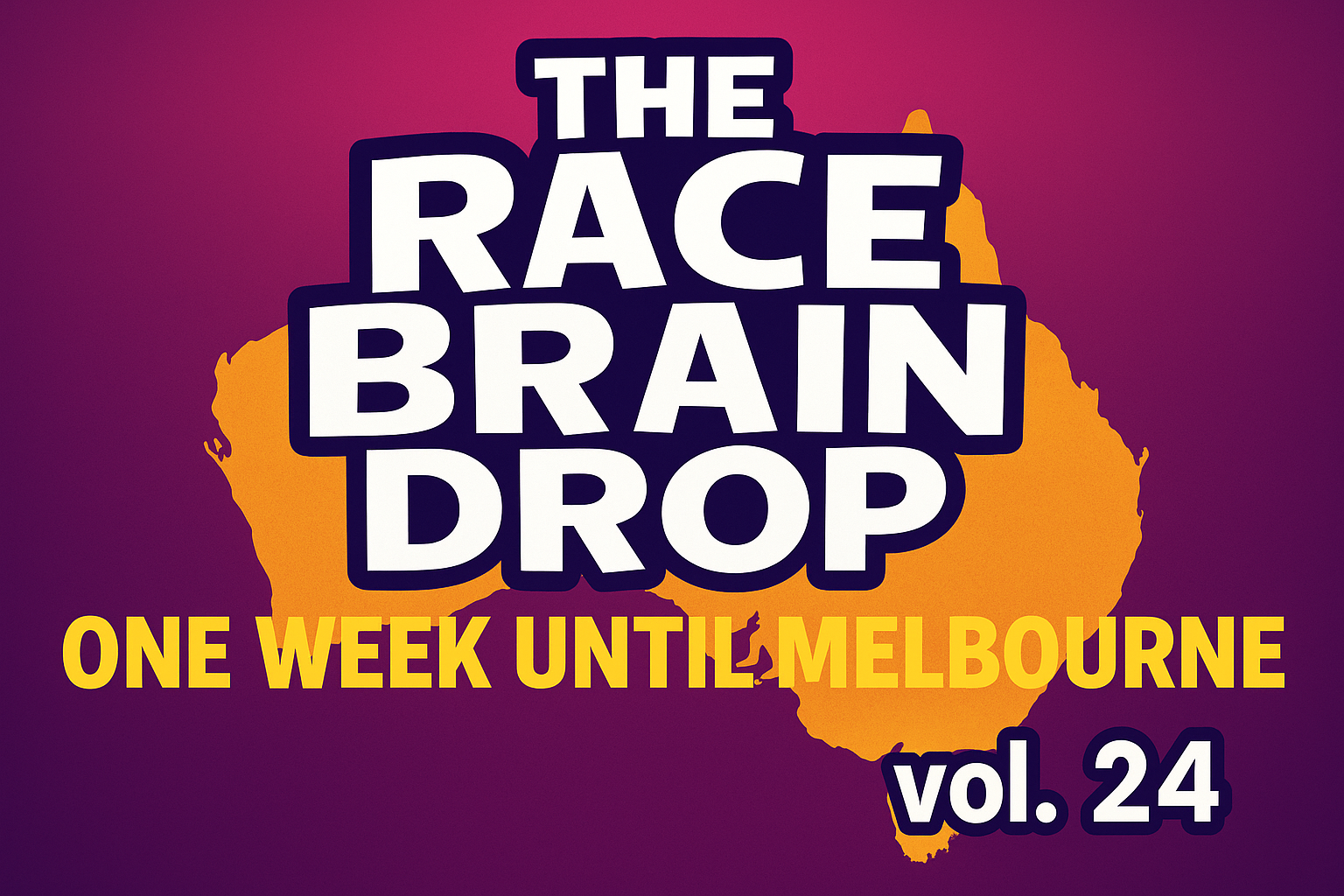

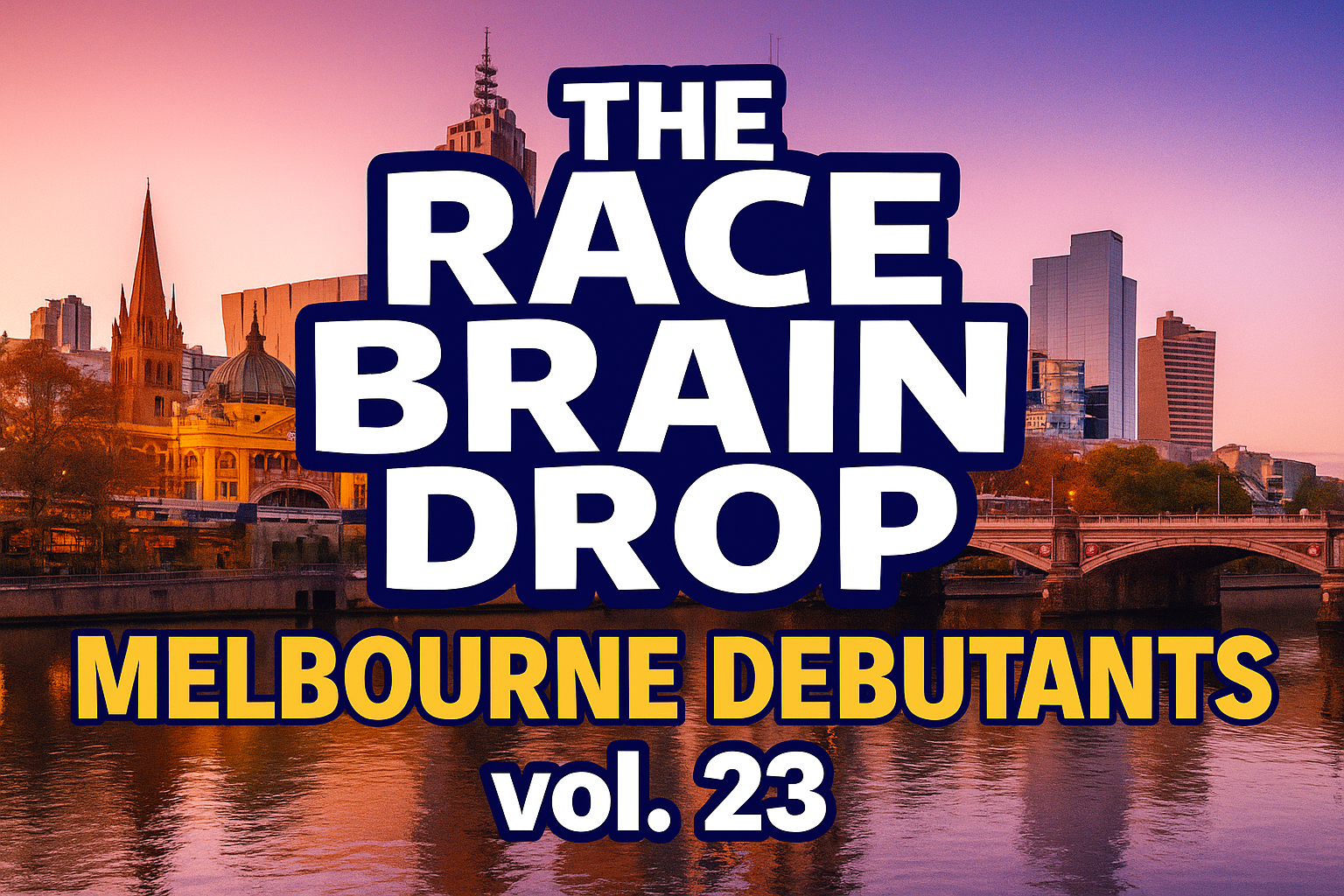


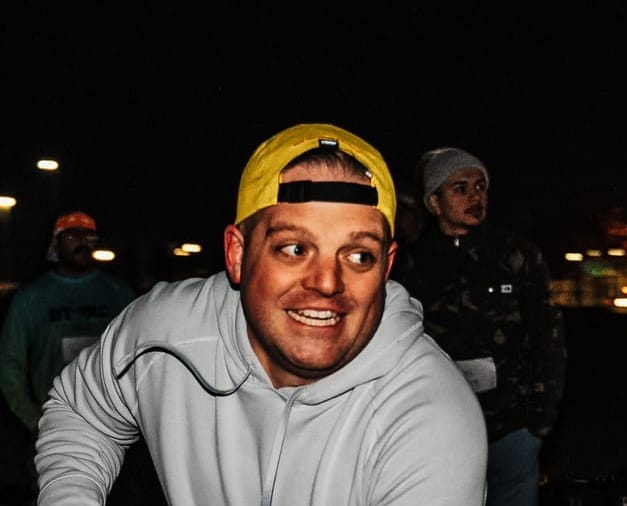
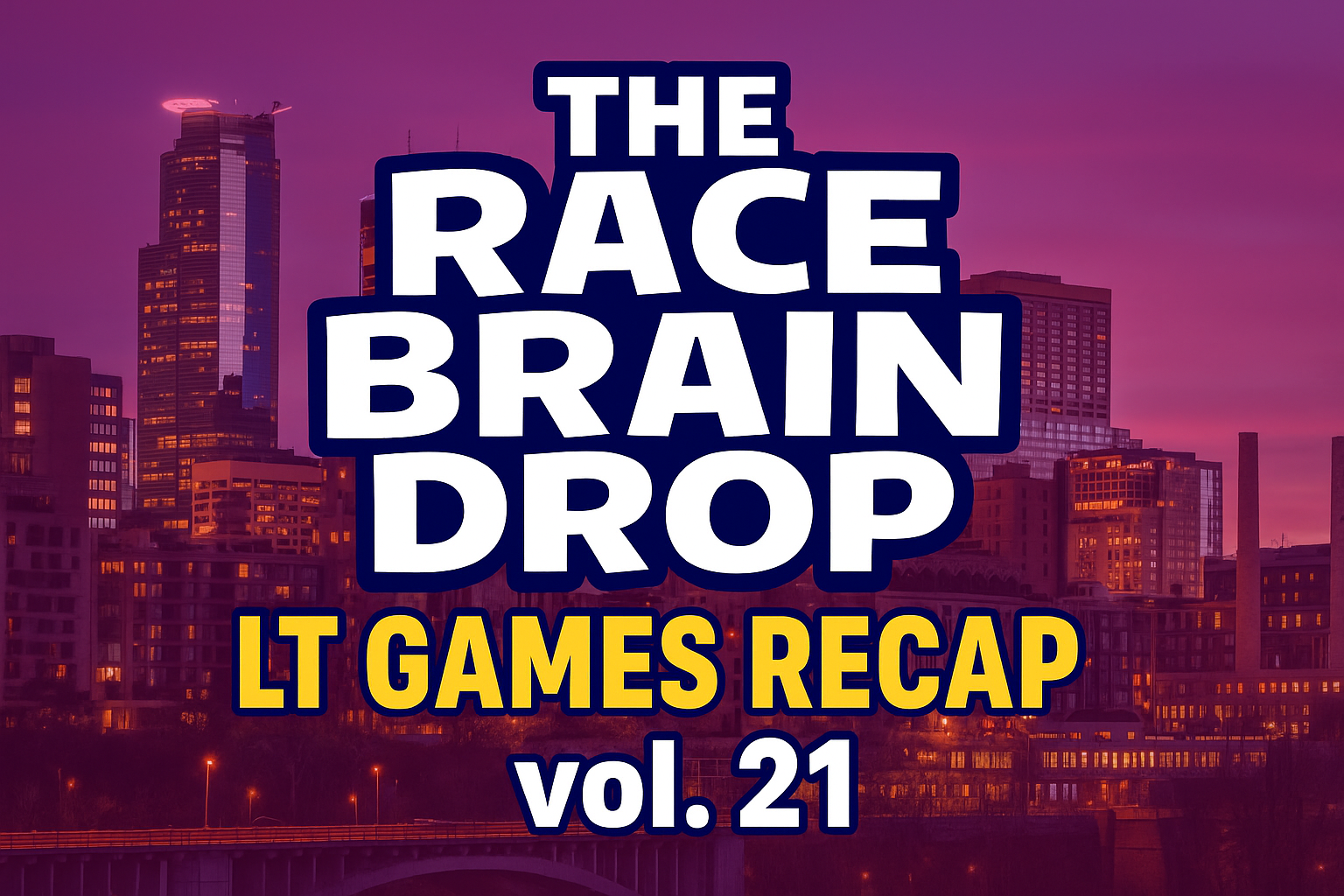
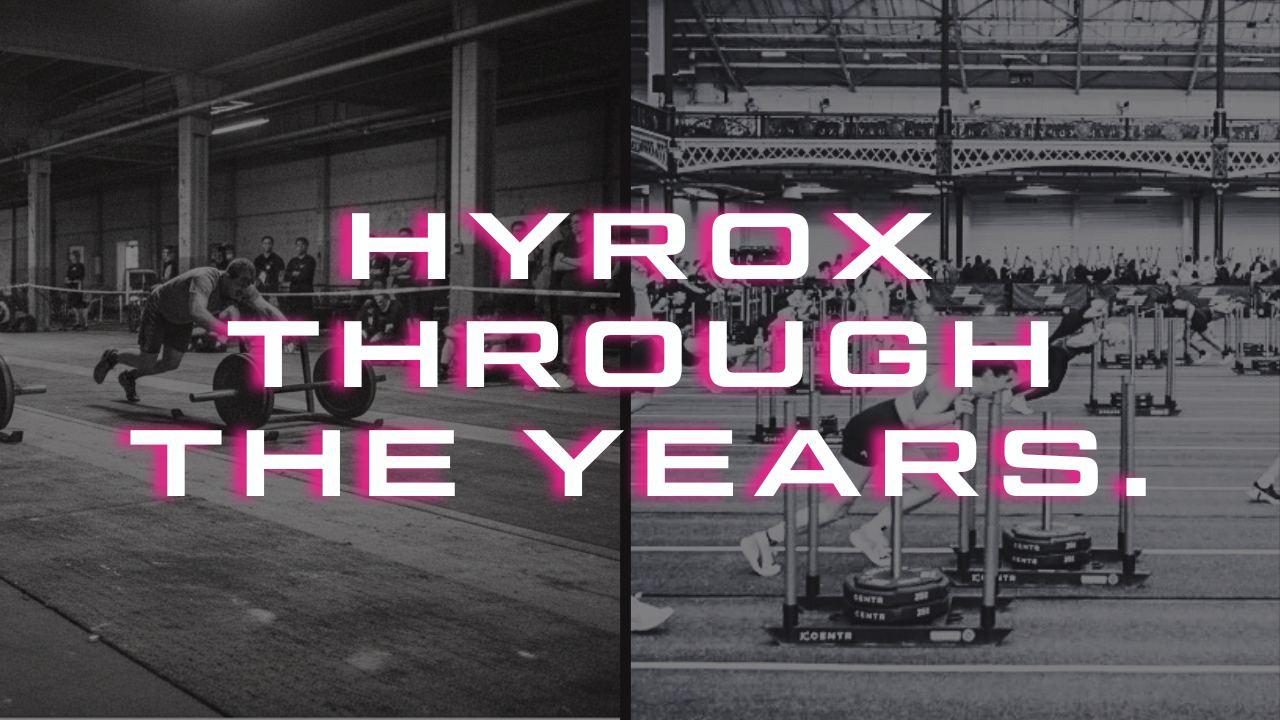




Discussion